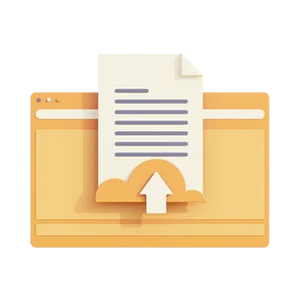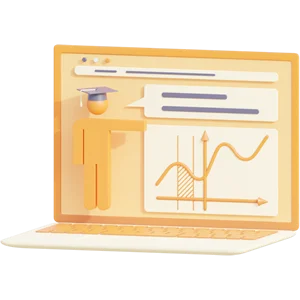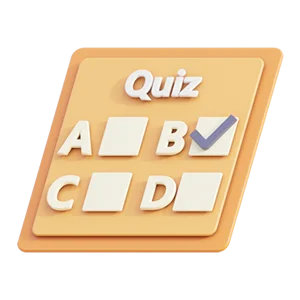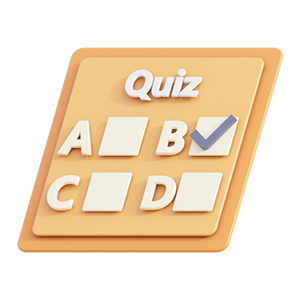Hesi LPN Practice Test Newest 2024 With Complete
Hesi LPN Practice Test Newest 2024 With Complete
The practical nurse (PN) is preparing to reconstitute a drug from powder form for IM administration. Which step should the
PN implement first?
A. Verify the drug with the medication administration record.
B. Mix the powder with the solution.
C. Attach the needle to the syringe.
D. Read the label to determine the amount of diluent to use. - A. The Five Rights of medication administration include the
right drug, right dose, right route, right time, and right client. The first action should be verification of the right drug in the
powder form for reconstitution.
Which action should the practical nurse (PN) implement when administering a subcutaneous injection to a client who weighs
325 pounds?
A. Produce a bleb at the injection site.
B. Insert the needle at a 15-degree angle.
C. Select a needle with a longer shaft.
D. Rub vigorously for a faster response. - C. To ensure penetration into the deep layer of subcutaneuos adipose for a client
who is obese, the needle length should be longer than the usual needle (preferably 3/8 to 5/8 inch in length) for
subcutaneous injection.
Which finding indicates to the practical nurse (PN) that an older client who is receiving intravenous therapy is experiencing
fluid overload?
A. Edema in lower extremities.
B. Crackles in the lung fields.
C. Pulse rate of 64 beats/min.
D. Respirations of 16 breaths/min. - B. IV fluid overload in an older client is likely to cause an increase in the workload of
the heart causing a decrease in cardiac output
The practical nurse (PN) is checking the surgical dressing for a client who arrived on the postoperative unit an hour ago.
The dressing has an increase in the accumulation of serosanguinous drainage. What nursing action should the PN take?
A. Reinforce the dressing with clean gauze sponges and tape.
B. Change the surgical dressing immediately to prevent infection.
C. Mark the outlined area of drainage with date, time and initials.
D. Collect a sample of the drainage for a culture and sensitivity - C. The area of bleeding on the dressing should be outlined,
dated, timed and initialed for furture comparison and evaluation
A male client who is 2 days postoperative for exploratory abdominal surgery is ambulating in the hall with the practical
nurse (PN). The client tells the PN, "I think something in my incision just let go." Which action should the PN implement first?
A. Notify the healthcare provider.
B. Assist the client to a supine position.
C. Instruct the client to avoid deep breathing.
D. Request an abdominal binder from a coworker. - B. The sensation of the surgical site letting go is characteristic of
wound dehiscence in the early postoperative period. The client should be placed into a supine position
The practical nurse (PN) is applying a dry, sterile dressing to a client's abdominal wound. Which allergy should the PN verify
with the client?
A. Tape.
B. Antibiotic ointment.
C. Povidone-iodine.
D. Hydrogen peroxide. - A. a dry, sterile dressing includes the use of gauze and tape . Although a client may be allergic to
the other substances used in wound care, (B, C, and D) are not used for a dry, sterile dressing.
The practical nurse (PN) is changing a postoperative dressing for a client with a horizontal lower abdominal incision. What
method should the PN use to remove the tape from the dressing?
A. Pull from the left to right across the abdomen.
B. Peel across the abdomen from the right to the left.
C. Start from the top of the incision moving to the bottom.
D. Remove all four sides by moving to the center of the incision. - D. The tape should be removed by starting all four sides
and moving towards the center of the incision to prevent disruption of the wound.
Which action should the practical nurse (PN) follow when applying an elasticized bandage to a client's leg?
A. Secure the end with metal clips.
B. Overlap turns of the bandage equally.
C. Adjust the tension as needed.
D. Wrap from the proximal to distal end. - B. The overlapping turns of the elasticized bandage should be evenly wrapped.
Metal clips (A) may release and cause injury to the client. The bandage should be applied from the distal end to the proximal
end of an extremity
An older client who has been on bed rest is not eating well and is exhibiting abdominal distension, cramping, and is passing
small amounts of liquid stool. Which prescribed action is most important for the practical nurse (PN) to implement?
A. Place incontinent pads on the bed.
B. Give a PRN dose of a stool softener.
C. Digitally remove a fecal impaction.
D. Administer a soap suds enema. - C. Abdominal distension, cramping, and passage of small amounts of liquid stool are
signs and symptoms of fecal impaction, which is relieved by digital removal.
Acetaminophen is prescribed for an unconscious client with a temperature of 104° F. Which route should the practical
nurse (PN) plan to administer this medication?
A. Oral.
B. Rectal.
C. Buccal.
D. Topical. - B. The rectal route, ensures absorption and safety for an unconscious client who is at risk for aspiration. (A
and C) are contraindicated for an unconscious client who may have a compromised gag reflex and is unable to swallow
A client with cancer who has been taking opioid analgesics for two years now requires increased doses to obtain pain
relief. The client expresses fear about becoming addicted to these drugs. What information should the practical nurse (PN)
provide?
A. Opioid use with cancer does not cause addiction.
B. Addiction is easily reversed if it occurs during pain management.
C. Prescribed opiates for cancer pain relief improve qualify of life.
D. Opioid dosages can be tapered if a client fears addiction. - C. Prescribed opiates for cancer pain relief improve qualify of
life
The goal of pain management for clients with cancer using opiates is to minimize pain and maintain quality of life
A client's indwelling urinary catheter is removed at 9:30 AM. The practical nurse (PN) assesses the client every two hours
for the desire to void. Which documented assessment requires further intervention by the PN?
A. 1:30 pm: unable to void.
B. 5:30 pm: unable to void.
C. 3:30 pm: unable to void.
D. 11:30 am: unable to void. - B. A client is due to void within 8 hours of catheter removal, so at 5:30 PM. Longer than 8
hours after removal, catheter reinsertion may be necessary. If the bladder is not distended, further action may not be
needed
Which position is best for the practical nurse to place the client in during administration of a rectal suppository for
constipation?
A. Prone with pillows under the client's abdomen.
B. Supine with the client on a bed pan.
C. Left Sims' position with upper leg flexed.
D. Right-side lying knee-chest position. - C. Left side-lying Sims' position lessens the likelihood that the suppository or feces
will be expelled, exposes the anus for visualization during insertion, and helps the client to relax the external anal sphincter
The practical nurse (PN) is adding tap water to several medications for administration via feeding tube. Which preparation
should the PN administer without delay?
A. Reconstituted powder.
B. Timed release capsule.
C. Cherry flavored elixir.
D. Flavorless suspension. - B. Although the gelatin capsule can be opened to administer the spansule's granules, the PN
should not crush or allow the timed-released granules to dissolve before administering this preparation via feeding tube
since the timed-release function can be compromised.
What action should the practical nurse (PN) take when drawing medication from an ampule?
A. Aspirate with a filter needle and syringe.
B. Tap the bottom of the ampule lightly.
C. Snap the neck of ampule towards nurse.
D. Use an alcohol swab to open ampule. - A. An ampule is made of glass with a constricted neck that is snapped off to allow
access to the medication. Medications are easily withdrawn from the ampule by aspirating the fluid with a filter needle and
syringe. Filter needles are used when withdrawing medication from a glass ampule to prevent glass particles from being
drawn into the syringe with the medication. Tap the top, not the bottom (B), of the ampule lightly to allow all of the
medication to drop to the bottom. When opening the ampule, the top should be snapped away from the nurse's face and
body (C). An opened alcohol swab wrapped around the top of the ampule may allow alcohol to leak into the ampule
Which intervention should the practical nurse (PN) implement to help a client cope effectively with chronic pain?
A. Administer around-the-clock opiate drugs.
B. Give scheduled doses of benzodiazepines.
C. Recommend avoiding painful activities.
D. Encourage using relaxation techniques. - D. Relaxation techniques can be an effective long-term strategy to help a client
control tension, anxiety, and cope with chronic pain. (A and B) are not useful for long term management of chronic pain. (C)
may not be feasible if activities of daily living are painful.
A young woman, who is the primary caregiver for her mother who has Alzheimer's disease, tells the practical nurse (PN),
"Sometimes I hate my mother for living this long and my Dad for dying and not caring for her." What response should the
PN offer?
A. What you do to cope with these feelings?
B. Have you told your family how you feel?
C. It's normal feel these emotions when you are stressed.
D. Don't worry, at least you can talk about your angry. - A. a response that invites the client to share feelings and
perceptions is the most therapeutic communication (B and C) do not provide the client the options to freely share her
distress
Preview document (3 van de 18 pagina's)
Voordelen van Knoowy
€ 37,99
 Niet tevreden? Geld terug
Niet tevreden? Geld terug
 Document direct te downloaden
Document direct te downloaden
 € 0,50 korting bij betalen met saldo
€ 0,50 korting bij betalen met saldo
-
 Ontvang gratis oefenvragen bij document
Ontvang gratis oefenvragen bij document

Specificaties
- School: Chamberlain College Of Nursing
- Opleiding: NURSING
Document
- Rubriek: Tentamens
- Gemaakt op: 17-07-2024
- Type: .pdf
- Pagina's: 18
- Taal: English
Tags
Verkoper
Verdienen aan je samenvattingen?
Vakken van NURSING - Chamberlain College Of Nursing
Meer NURSING ›ati comprehensive comprehensive predictor computer science fundamentals health care health care / nursing health care/ nursing healthcare hesi hesi rn exit maternal newborn med surg medical nursing medical surgical mental health nurs nursing nursing & health nutrition pathophysiology pediatrics pharmacology test bank tncc
Al meer dan 146.000 tevreden studenten
-
JadeVanBignoot
Knoowy is zeker aan te raden. Goedkoop en je krijgt meteen je document!
-
Isabelchloe
Knoowy is een top site waar je veel samenvattingen op kan vinden.
-
sandervdellen
Knoowy is een zeer goed platform voor samenvattingen en ik zou het aanraden.
-
sterrevanlommel
Knoowy is heel handig om te gebruiken. Zeker aan te raden.
-
tarikkkk
Knoowy is heel handig om te gebruiken en je vind snel het materiaal dat je nodig hebt.
-
Erik Wemmers
Online kun je studenten helpen met notities en samenvattingen terwijl je niet meer echt naar je samenvatting hoeft om te kijken. Het past goed bij je studie en je kunt tegelijk wat bijverdienen!
-
Flowtjez
Makkelijke site om veel samenvattingen en verslagen snel te vinden.
-
jennahlamont
Super handig, echt een goeie site. Ik ga dit in de toekomst vaker gebruiken!
 Actie: ontvang 10% korting bij aankoop van 3 of meer items!
Actie: ontvang 10% korting bij aankoop van 3 of meer items!
Actie: ontvang 10% korting bij aankoop van 3 of meer items!









